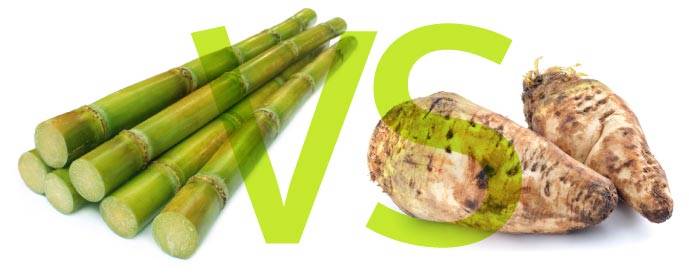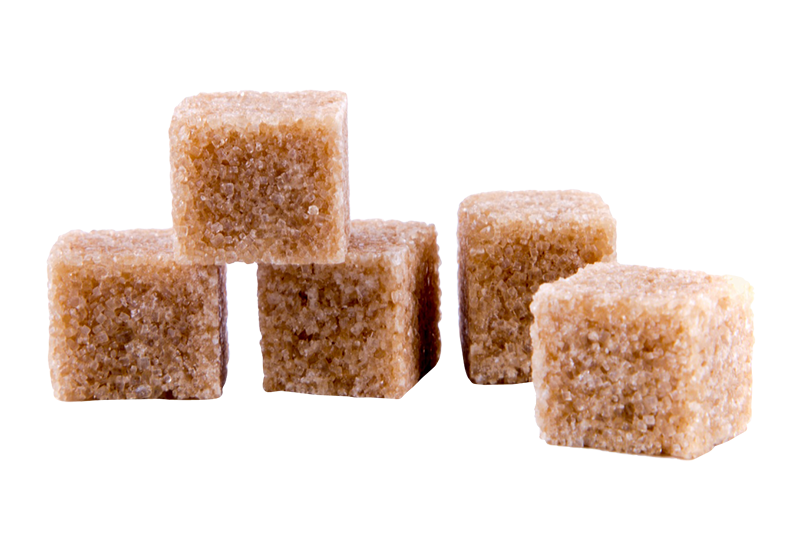Cane Sugar Processing: From Field to Table-- A Step-by-Step Overview
Cane Sugar Processing: From Field to Table-- A Step-by-Step Overview
Blog Article
A Comprehensive Overview to the Environmental Impact and Sustainability Practices in Cane Sugar Processing
The ecological influence of walking stick sugar processing offers an intricate variety of challenges that warrant careful exam. From soil degradation and too much water usage to the carbon footprint linked with growing and production, the effects of standard methods are far-reaching. What certain methods can be implemented to strike an equilibrium between performance and environmental stewardship?
Overview of Walking Cane Sugar Processing
Walking cane sugar processing entails a series of organized steps that change sugarcane into polished sugar. At first, collected sugarcane is delivered to processing centers, where it undergoes cleaning up to remove soil and particles. Following this, the cane is squashed to draw out juice, which is then clarified by removing contaminations with home heating and the addition of lime.
The clarified juice goes through dissipation, where water is gotten rid of to concentrate the sugar material. These crystals are divided from the remaining syrup using centrifugation, resulting in raw sugar.
The last item is after that dried and packaged for distribution. Throughout this entire procedure, keeping efficiency and high quality control is vital to ensure the sugar satisfies sector requirements. Each action in cane sugar processing not just adds to the end product but likewise has effects for resource use and waste generation, setting the phase for conversations on sustainability and ecological impacts related to sugar production.
Environmental Difficulties of Production
The manufacturing of walking cane sugar provides several significant ecological challenges that warrant attention. One main problem is the comprehensive use agrochemicals, consisting of plant foods and chemicals, which can lead to soil degradation, biodiversity loss, and contamination of regional water sources. The runoff from sugarcane fields commonly lugs these chemicals right into close-by ecological communities, interfering with marine life and impacting the health and wellness of neighborhoods reliant on these water bodies.
Another obstacle is the high power usage connected with sugarcane processing. The boiling and refining stages require considerable warm, mainly produced by shedding fossil gas, adding to greenhouse gas exhausts. Furthermore, the expansive acreage needed for sugarcane cultivation can bring about logging and habitat devastation, additional intensifying environment modification and threatening wild animals.
Additionally, the labor practices in some areas increase ethical worries, as workers might face inadequate working conditions and poor salaries. This scenario commonly perpetuates a cycle of destitution in local areas. Cane Sugar Processing. Dealing with these ecological difficulties is crucial for creating more sustainable practices in walking cane sugar production, eventually benefiting both the environment and the neighborhoods involved in this industry
Water and Land Usage Impact
Water resources and land application are vital parts in the cane sugar market that significantly affect the setting. The cultivation of sugarcane needs significant water input, with price quotes suggesting that it can take in approximately 2,000 litres of water per kilogram of sugar created. This extensive usage of water often causes deficiency of local water resources, impacting not only the sugarcane vineyards yet also surrounding environments and areas that rely upon the same water sources for agriculture and domestic use.

In addition, land use for sugarcane farming can cause deforestation and the conversion of natural environments into monoculture vineyards. This practice reduces biodiversity, disrupts regional ecosystems, and adds to dirt degradation. The growth of sugarcane areas typically encroaches on important farming land, developing competitors for resources in between food and biofuel manufacturing.
Sustainable methods, such as maximizing irrigation methods and applying crop rotation, are important to reduce these influences. By taking on much more effective water use and land monitoring techniques, the walking stick sugar sector can reduce its ecological footprint, making certain an equilibrium between agricultural efficiency and environmental conservation.
Greenhouse Gas Emissions
Greenhouse gas exhausts stand for a significant environmental issue within the walking stick sugar handling sector, specifically as farming techniques expand to meet global demand. The cultivation of sugarcane, a crop that grows in exotic environments, depends greatly on artificial fertilizers and pesticides, which contribute to nitrous oxide discharges. Furthermore, land-use modifications, consisting of deforestation for new sugarcane ranches, release carbon dioxide stored in greenery and soil.
Throughout handling, energy consumption is another significant resource of greenhouse gas discharges - Cane Sugar Processing. Lots of sugar mills use nonrenewable fuel sources to power machinery and create warmth, causing significant carbon footprints. Furthermore, the transport of raw sugarcane and ended up items adds layers of emissions through gas burning in automobiles
This includes reviewing present agricultural methods, refining methods, and transportation systems to recognize areas for enhancement and reduction. Addressing greenhouse gas discharges is crucial for fostering a much more lasting walking cane sugar industry in an altering environment.

Sustainable Practices and Innovations
Sustainable techniques and advancements are increasingly essential in the walking stick sugar processing sector as stakeholders seek to reduce ecological impacts while keeping productivity. One substantial improvement is the implementation of incorporated crop monitoring, which optimizes source use by integrating soil administration, pest control, and plant rotation methods. This approach improves Get the facts return while reducing chemical inputs and maintaining soil wellness.
Moreover, the fostering of renewable energy resources, such as biomass from sugarcane residues, has obtained traction - Cane Sugar Processing. By transforming waste items into energy, refining facilities can minimize their dependence on nonrenewable fuel sources, consequently decreasing look what i found greenhouse gas emissions
Water monitoring practices have likewise seen renovations through the recycling and reusing of water in handling plants, dramatically decreasing freshwater usage. Technologies in technology, such as precision farming, make it possible for farmers to monitor plant wellness and source usage much more successfully, making certain sustainable cultivation practices.
Moreover, qualification programs like Fair Profession and Rain forest Partnership encourage environmentally responsible farming methods and promote social equity within the supply chain. By accepting these lasting methods and technologies, the walking cane sugar handling sector can boost its strength and add favorably to ecological stewardship.
Verdict
The ecological influence of walking stick sugar handling provides considerable difficulties, including soil degradation, high water consumption, and greenhouse gas exhausts, along with moral problems associated with labor techniques. Attending to these problems with sustainable practices, such as incorporated plant administration, renewable resource fostering, and water recycling, is crucial. By advertising ecologically accountable and socially equitable methods in sugar manufacturing, the sector can alleviate its unfavorable effects, making certain a much more sustainable future for both ecosystems and areas involved in this field.
Walking stick sugar processing entails a series of systematic actions that transform sugarcane right into check that refined sugar. Each action in walking stick sugar processing not just contributes to the final item but additionally has ramifications for source use and waste generation, establishing the phase for discussions on sustainability and ecological impacts linked with sugar production.
Greenhouse gas exhausts represent a significant ecological issue within the walking cane sugar processing sector, especially as farming methods increase to satisfy international demand.Lasting practices and technologies are increasingly essential in the cane sugar handling industry as stakeholders seek to lower environmental effects while maintaining efficiency.The ecological impact of walking cane sugar processing provides substantial challenges, including dirt degradation, high water usage, and greenhouse gas exhausts, alongside ethical worries connected to labor practices.
Report this page